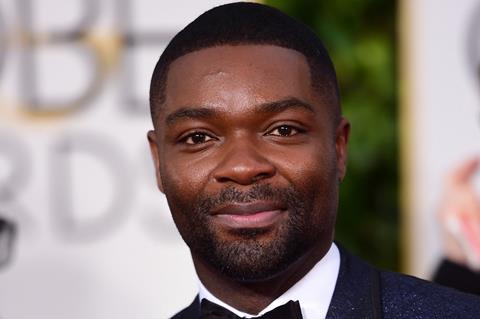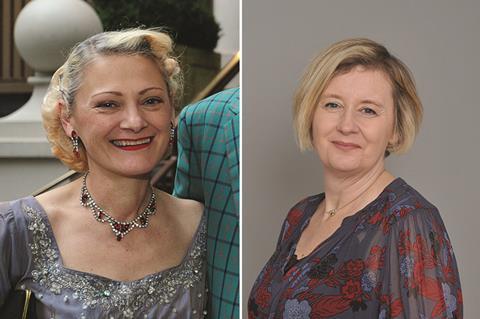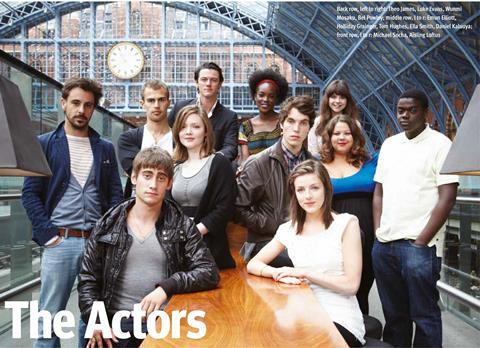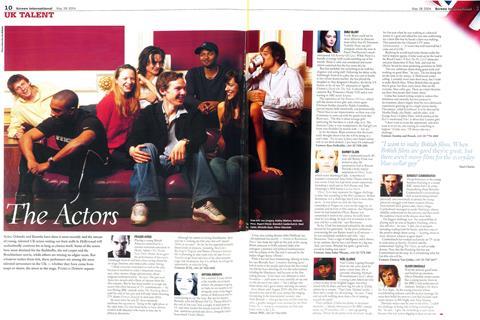As Screen International’s new-talent showcase Stars of Tomorrow reaches its 20th anniversary, Screen looks back over two decades of star spotting.

In the two decades since its inception, Screen International’s new-talent initiative UK & Ireland Stars of Tomorrow has amplified myriad emerging actors, filmmakers and below-the-line craftspeople who have gone on to become award-winning household names.
The actors’ alumni alone features a host of big-screen superheroes — including Batman (Robert Pattinson), Spider-Man (Tom Holland) and Professor X (James McAvoy) — not to mention Star Wars warriors (John Boyega and Felicity Jones), three Doctor Whos (Matt Smith, Jodie Whittaker and the incoming Ncuti Gatwa) and a plethora of now-familiar faces from cinema and TV, including Emily Blunt, Benedict Cumberbatch, Dan Stevens, Mia Goth, Gugu Mbatha-Raw, Emilia Clarke, Phoebe Waller-Bridge, Bella Ramsey and Michaela Coel. The combined cohort also includes numerous Bafta winners, and Oscar recipients, including actors Eddie Redmayne and Riz Ahmed and filmmaker Andrea Arnold.
It is a fitting legacy for a platform that was designed to amplify up-and-coming UK talent who may not otherwise have been noticed by the industry (it was rebranded to include Ireland in 2014).
“I was prepared to push the boat out and take a risk on people I thought deserved a break,” says Patricia Dobson, a regular Screen International contributor who curated Stars from its inauguration in 2004 until 2010. “My idea was always to try to include people who may not have been seen otherwise by casting directors and producers. There were a lot who didn’t even have agents when we put them in.”

This inclusive approach was appreciated by the talent, right from the start. “At the stage in your career when this accolade is afforded, because of the inherent insecurity of the acting profession you tend to be unsure as to whether you will even still be an actor tomorrow, let alone a ‘star of tomorrow’,” says actor and producer David Oyelowo, who was part of the 2005 cohort. “So that vote of confidence is a huge encouragement to keep going.”
For Dobson — and, similarly, for current curator Fionnuala Halligan — unearthing these undiscovered gems means the mammoth undertaking of working industry contacts, reading mountains of screenplays, watching hundreds of short films and going to see numerous theatre productions and film-school graduation showcases. This was particularly challenging in the early days, before the initiative had established itself.
“Patricia was an absolute godsend, because she did all the hard work,” notes Screen International’s former editor-in-chief Colin Brown, who was one of the brains behind Stars. “She was very rigorous, she infiltrated the whole development side of the UK filming scene, got the names and tried to see all of the work herself. Then she was very insistent on the names that were going to be in there. We completely trusted her.”

Believing in Dobson’s picks was important, as the fledgling Stars played a central role in the revamp of Screen International in the early 2000s. During that time, Brown had helped steer the brand from a weekly newspaper tied to the UK industry to a glossy international magazine with a dominating presence at global festivals. “We realised there were three necessary pillars for an international magazine — money, partners and talent,” recalls Brown. “Everybody wanted to know about funding, everyone wanted to find partners to work with in different countries. My view was that it all revolved around talent because that’s a commodity on which the entertainment business, as a whole, trades.”
There was also, he admits, the idea that a Stars of Tomorrow photoshoot of group and individual shots could also provide some of the lavish front covers that would be needed by the new magazine format — something inspired in part by the fact Brown’s brother was a professional photographer. “The other thing that drove it was nepotism, I hold my hands up!” Brown laughs.
Genuine impact

There was much riding on the early success of Stars, and so Dobson had to have the courage of her convictions. “Of course, it was impossible to know if individuals were going to be stars — they might be terrible in a major role or a film might flop completely,” she reflects. “But there were some people you just knew were going to be good. Like Carey Mulligan, for example: I had seen her on TV but I didn’t put her in until a year later, when she had just been cast in An Education. I hadn’t read the script, but I knew she would be good. And with Claire Foy — I went to the National Theatre to see another actress in a showcase; I was very unimpressed by her, but Claire walked onto the stage and I just thought, ‘Bloody hell, who’s she?’
“It took Claire a long time to make it,” Dobson continues of the actress who has since gone on to portray the young Queen Elizabeth II in Netflix hit The Crown and has appeared in features including First Man and Women Talking. “Benedict Cumberbatch also took a long time to become a major star. I always joked about the fact my picks were probably the stars of the day after tomorrow.”
While it can certainly take the industry a while to catch on, Stars of Tomorrow has become a major barometer for upcoming UK talent and a useful tool for the industry. That evolution has continued under the lead of Halligan, who took the baton from Dobson in 2011 and has grown Stars to the point where it now has offshoots in Scotland, Ireland, Spain and the Arab industry, with more in the pipeline. Despite this exponential growth — Halligan estimates it has trebled in size since she took over — the focus remains the same as it ever was.
“Access is demonstrably wider these days, and talent is coming from all areas,” says Halligan, who sifts through hundreds of entrants each year through a combination of application process, industry recommendations and keeping her ear to the ground. “It’s a difficult process and I hate turning down good people,” she says, “but I still insist on cinema being a defining qualification. I’m not here as a TV showcase, or as a platform for the acting and film schools — although I appreciate what both can do. Stars is broad and welcoming and that has become its defining characteristic. Across class, race, income, the entire country, ability, gender, every person is welcome here.”

This focus on inclusivity has been the backbone of Stars since its earliest days, and hopes have always been that it would pay dividends back into the industry. “I was always trying to champion people who [otherwise] would have been lost,” says Dobson. “When I put in Zawe Ashton [2009], for example, she had only done a small play [and minor TV roles], but when I spoke to her she had such a great attitude. Before it was published, I told [casting director] Lucy Bevan about her, and she cast her in St Trinian’s 2. The following year brought Fresh Meat, and off she went.”
“It means a lot to the talent,” echoes Halligan. “It can make a big difference to their careers and their self-confidence, that they are being seen. Sometimes I know I have really got it right, both with individuals and with the whole line-ups. With some people I have just thought, ‘You could have a really big, unusual voice, let’s help you and see what happens’. And there have been times where that’s gone all the way to the Baftas and the Academy Awards.”
Career boost
Even when they have achieved much in the industry, former Stars of Tomorrow still cite their selection as a key stepping stone in their career.
“As someone who isn’t great at fitting in, to have what felt like literally a badge to pin on my chest was very satisfying indeed,” recalls screenwriter and 2007 Star of Tomorrow Jack Thorne, whose recent credits include The Swimmers and The Aeronauts. “I was hugely grateful for it, and it brought me a huge amount of confidence and self-belief.
“As for now, we are in a strange world,” he continues. “Maybe it’s post-Covid, maybe it’s the streaming proliferation causing confidence to shake, but I think it’s much harder to be a new talent now than at any time I have known. The idea of a Star of Tomorrow is therefore of extreme importance — identifying people who producers can have faith in and giving them that vital badge on their chest.”
That is a sentiment shared by fellow screenwriter Krysty Wilson-Cairns, a Star of Tomorrow in 2014 (whose credits include 1917 and Last Night In Soho). “It’s hard making your way into the film industry,” she says. “As a writer it is even more complicated because you’re not on set, you’re not with people, there is nowhere to apprentice or to make connections. For me it was a lot of writing, alone, in my bedroom — which I have to say doesn’t ever feel real. Also telling your family you are going to be a screenwriter is a bit like telling them you have taken up playing the lottery professionally. Being named as a Star was life-changing because for the first time it seemed real — to me, to my family and to the industry as a whole. I ended up winning the lottery because being a Star of Tomorrow gave me the courage to keep buying tickets.”

For Brown, the Stars legacy is self-evident. “We were the first to run something like this and, back then, all those people were just faces,” he recalls. “Now, many years later, they are the British industry.”
That is arguably the most enduring impact of the initiative, and one of the reasons it continues to go from strength to strength. It is not simply a beauty pageant of the best and brightest, but a crucial cog in the industry machine.
“You can see some people pay back to society and the industry after they become successful, and they are the ones I am proudest of,” says Halligan. “Class, race and sex have been hot points in the industry at various times and I keep that very much in mind. We don’t have to make big ‘look at me’ points — it’s all about directing people to the talent.
“When Barry Keoghan [who grew up in the care system] was a Star of Tomorrow [in 2015], I was super-happy as I knew exactly where he had come from. I feel we are really beginning to tear down walls.”
To celebrate 20 years of Stars of Tomorrow, curator and Screen International executive editor Fionnuala Halligan will be chairing a panel at the UK Film Centre in the International Village on Saturday, May 20, 4pm to 5pm, on attaching UK talent to international projects. The 2023 UK & Ireland Stars of Tomorrow will be unveiled in early July.

























No comments yet